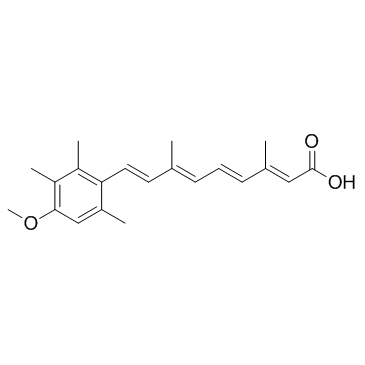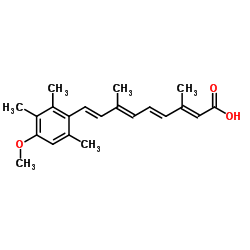| Structure | Name/CAS No. | Articles |
|---|---|---|
 |
Acitretin
CAS:55079-83-9 |
|
 |
13-cis-Acitretin
CAS:69427-46-9 |
|
 |
AM580
CAS:102121-60-8 |